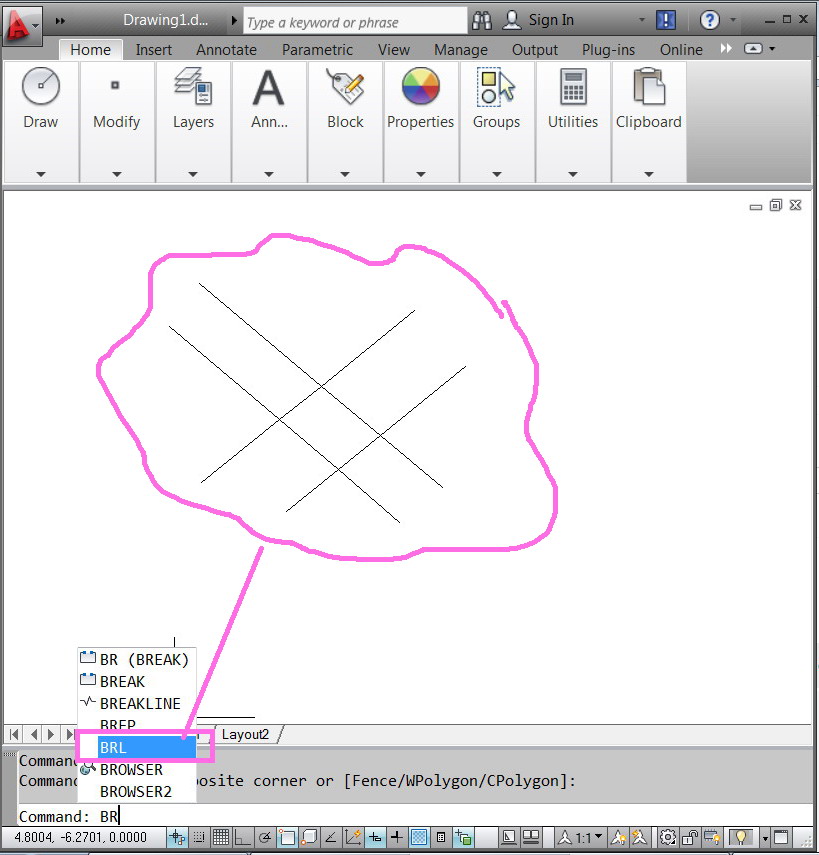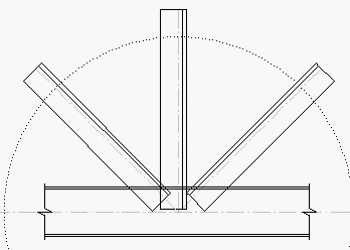Autocad Lisp Steel Sections
AboutJTB Steel is an app running inside AutoCAD®, adding powerful command features to help you draw simple and complex steelwork frames and details efficiently.You can select and insert Steel Sections from JTB Steel library to AutoCAD® drawing just as inserting blocks. You can draw Steel Frames just as drawing lines by 2 pickpoints. All created drawing objects are either blocks or dynamic blocks. Once Steel members are inserted, you can edit these using powerful editing commands located on Tools Palette.JTB Steel includes advanced automation techniques for modifying dynamic blocks.
This means that you can easily manage your drawings and quickly finalize your details. DownloadJTB Steel trial license is limited to 30 minutes running time which restarts each time AutoCAD is restarted. It is also limited to drawing file size of maximum 500 objects. Once the above limitations are reached, some features are disabled until the software is purchased and fully activated. Support is available during the trial as well as after purchase.JTB Steel trial can be or by contacting us.This will install a Plug-Ins/Add-ins Ribbon tab panel in AutoCAD 2012 and newer versions as well as verticals.If purchase has been done via Autodesk App Store the download is available on the Autodesk App Store. Sign in with the same account used when purchasing.
System requirementsOperating system - Windows 10, Windows 8.1, Windows 8, Windows 7. Both 32-bit and 64-bit. Windows Vista and Windows XP might be supported upon request.Compatible with AutoCAD versions (2007 and up to ). Works with all flavors/verticals based on AutoCAD like AutoCAD Architecture (ACA), AutoCAD Civil 3D, AutoCAD Electrical, AutoCAD Map 3D, AutoCAD Mechanical, AutoCAD MEP (AMEP, ABS), AutoCAD P&ID, AutoCAD Plant 3D, Autodesk Advance Steel.Contact us if support for other CAD software is needed like BricsCAD.


Purchase75 USD for one license of JTB Steel or less depending on the quantity of licenses.Or purchase JTB Steel from the.If purchase has been done via Autodesk App Store the download is available on the Autodesk App Store. Sign in with the same account used when purchasing.Install JTB Steel and run 'JTB Steel.exe' click on Activate and follow the instructions to receive the activation key. Normally it's sent within 24 hours.If you have really many users that you want to give access to this software we can discuss a discounted price based on your particular situation. Educational discounts available.The license is perpetual and support is included. If you have more than one computer and you are the only user of the application one license is enough. Available payment methods depending on country where payment is done from: Local Bank Transfer (Canada), Wire Transfer to Canada, Interac e-Transfer, Cheque (to Canada).
Via BlueSnap (Global Payment Gateway) these methods may be available (not a complete list as it is updated from time to time by BlueSnap): Credit card (Visa, Master Card, American Express, Discover, Diners Club, JCB, Carte Bleue), PayPal, Local Bank Transfer, Wire Transfer, ACH, Google Pay, UK Direct Debit, Smart Debit, Real-time Bank Transfer, Electronic Check (ECP), Apple Pay, Skrill (Moneybookers), WebMoney, Sofort, Giropay, iDeal, ENETS and Alipay (SEPA (Single Euro Payments Area) Direct Debit, PaySafeCard, Ukash, cashU, Boleto Bancario, Boleto Bancario can be made available upon request). Documentationto see the documentation.Known Issues. Steel Frame with wipeout on is not working properly in AutoCAD 2019.
Hope we can have a fix for this soon in the near future. (Fixed in AutoCAD 2019.0.1 Update). JTB Steel UI get wrong if Windows display scaling is set to a value other than 100%. In Win32, when no VBA installed, Draw and Tool palette are shown as modal dialog windows.
In Window 64-bit, this 32-bit software run pretty slower. While any modal dialog is active, please don't click to AutoCAD screen. Minimize all other application windows is also recommended. In Win32 bit, AutoCAD 2013, if VBA installed, an error beep sound invokes after AutoCAD shut down. Version History. 2019-03-28 - version 1.6.1. Added support for AutoCAD 2020.
Updated installer. 2018-03-29 - version 1.6. UI fixes. Added support for AutoCAD 2019. Network licensing added. Fixed issue where the frame tag/frame view layers get switched.
Add Australian member schedule files. 2019-12-09 4.0.0 released. 2019-12-05 2.5.0 released. 2019-12-03 2.1 released.
Better Offset for AutoCAD. 2019-11-18 11.7.0 released. Time to upgrade or request a free fully functional trial. Your companion. 2019-11-14 3.1.1 released. 2019-11-08 1.3 released. 2019-10-21 2.0.1 released.
2019-10-18 for AutoCAD 1.5.3 released. 2019-10-15 1.3 released. 2019-10-15 5.6.4 released.
Batch create and update text and attributes or insert blocks on hundreds of drawings automatically. 2019-10-15 2.1.2 released. 2019-10-15 2.5.0.1 released.
2019-09-16 2.5.2 released. 2019-09-01 for AutoCAD 2020 and BricsCAD released.
2019-09-01 7.3.1 released. Makes it easy to edit properties on multiple sheets in AutoCAD Sheet Set Manager. 2019-08-19 1.0.1 released. 2019-08-19 4.0.5 released. 2019-08-12 4.2.1 released. 2019-08-12 2.0.3 released. 2019-08-12 3.2.1 released.
2018-07-30 1.2 released. 2019-07-08 2.0.2 released. 2019-06-29 3.0.1 released. 2019-05-25 2.2 released.
2019-03-28 2.0.1 released. 2019-03-28 5.1 released.
Script and batch processing for AutoCAD. 2019-03-28 1.0.2 released. 2019-03-28 1.8 released.
2019-03-28 1.3 released. 2019-03-28 4.2 released. 2019-03-28 updated. 2019-03-28 2.1 released.
2019-03-28 1.2.1 released. 2019-03-28 1.6.1 steel shape drafting app for AutoCAD released. 2019-03-28 1.1 released.
2019-03-28 1.6.1 released. 2019-03-28 3.1 released. 2019-03-28 updated for AutoCAD 2019. 2019-03-28 updated. 2019-03-28 updated.
2019-03-28 updated. Highlight edited dimensions for AutoCAD. 2019-03-28 updated. 2019-03-28 updated. 2019-03-28 updated. 2019-03-28 1.2 released.
2019-03-28 updated. 2019-03-28 2.1 released. 2019-03-28 1.2.1 released. 2019-03-28 updated. 2019-03-28 updated. Mass produce PDF and/or DWF. 2019-03-28 updated.
2019-03-28 3.1 released. 2019-03-28 2.1 released.
2019-03-28 updated.
When building my data base for steel shapes I had to combine three data bases before I got something that was close to my CISC handbook. I used the AISC and CISC data bases supplied with ADT and an old data base on a cd supplied by the CISC. Not one of the three data bases supplied matched the CISC handbook.
Also none of the data bases had any information regarding the toe radius.The standard channel shapes drawn by the Detail Component Manager supplied with ADT from either AISC or CISC are drawn with a short vertical segmant at the toe. The toe radius column in the data base contains only zeros. AutoCAD draws the toe radius Rt equal to the root radius Ri.
I assumed the same. The geometry is not indeterminate. It can be constructed with the vertical segmant at the toe.I have not measured an actual piece of steel. I too would be interested in the response from AISC. Reply from AISC. I've followed up with some otherquestions and I'll post those answers when I have them.Jason,Radii of fillets and toes of shape profiles vary with individualmanufacturers and therefore are not specified in the ASTMA6 Standard which covers the Generals Requirements forRolled Structural Steel Bars, Plates, Shapes, and Sheet Piling.Kurt Gustafson, S.E., P.E.Director of Technical AssistanceAmerican Institute of Steel Construction, Inc.866.ASK.AISC'Jason Piercey' wrote in messagenews:5308302@discussion.autodesk.com. I've sent a question into AISC.

That's what I figured.PJ'Jason Piercey' wrote in messagenews:5310248@discussion.autodesk.com.Reply from AISC. I've followed up with some otherquestions and I'll post those answers when I have them.Jason,Radii of fillets and toes of shape profiles vary with individualmanufacturers and therefore are not specified in the ASTMA6 Standard which covers the Generals Requirements forRolled Structural Steel Bars, Plates, Shapes, and Sheet Piling.Kurt Gustafson, S.E., P.E.Director of Technical AssistanceAmerican Institute of Steel Construction, Inc.866.ASK.AISC'Jason Piercey' wrote in messagenews:5308302@discussion.autodesk.com. I've sent a question into AISC.
I'm trying to find out if we have an ASTM A6 manual so I can seewhat type of guidelines they provide. I also talked with one of ourlocal steel guys, who just happened to stop in here yesterday, andhe can get me some scrap pieces of whatever I need. So I shouldhave a piece of channel and angle some time soon.
Autocad Lisp Download
He did say theradius at the toe of an angle is probably tighter than I think. I'llkeep you posted with any further updates.-Autodesk Discussion Group Facilitatorwrote in message news:5310297@discussion.autodesk.com.Thanks, Jason. Kurt's response to my question about tolerances that steelmanufactures must abide by.There is no specific tolerance that manufacturers must abide by in thisrespect. Section properties of rolled shapes are mainly controlled bythe tolerance on weight, depth, flange width, web thickness, etc. Aspreviously stated there is no specific tolerance on the fillet dimensionwhich will likely vary from manufacturer to manufacturer dependingon the design and wear on their rolls at any specific time. AISC doesa survey of various manufacturers from time to time, for each shapelisted in the Steel Construction Manual, to see what the maximum andminimum radii values are running for any particular shape; then usesthe most conservative value in deriving the section properties that arelisted in the Manual. These radii can vary from shape to shape.
Thisinformation is not available for distribution.' Jason Piercey' wrote in messagenews:5310248@discussion.autodesk.com.Reply from AISC. I've followed up with some otherquestions and I'll post those answers when I have them. These pictures will attest to the inaccuracy of the rolling of steel shapes.As it seems there is no standard with respect to the exact shape I have assumed the following:1. (setq Rt (/ Tf 2.0))2.
That there is a small straight before the toe radius.3. That the angle of the tapered flange is 9.5deg.This does not result in a polyline that conforms to the 'k' dimension given in design tables but I don't think I care.I have been told that the angle of the sloped flange is 12.5deg (or 2:9) but I cannot confirm this. However using 12.5 does give a value for 'k' closer to the design tables. I haven't decided if I am going to change to 12.5 or stay with 9.5?!RegardsPhill. No, Phil, you should maintain dimension 'k,' for which there is a design standard.Refer to previous posts (either my own or Jamie's) to see that the arc at the web is determined by the published data. It is the radius at the toe which may vary among manufacturers, and even for the same manufacturer depending on the condition of the rolls, as Kirk's reply to Jason stated.According to AISC, American Standard beams (S shapes) and American Standard channels (C shapes) have a flange slope of approximately 16.67%, or 2 in 12, or 9.5 degrees.But also according to AISC, M and MC shapes may have various slopes on their inner surfaces, depending on the manufacturer. It may be that some MC shapes have a 12.5 degree flange slope (I don't know).For a further discussion of shape profile dimensions and tolerances, look on page 1-4 of ASD 8 (the RED cover version of AISC Manual of Steel Construction, published 1980).
The short discussion on manufacturing tolerances (which gives some insight into this topic) is absent from, e.g., ASD 3).